Keeping everything aligned with your business objectives isn’t always straightforward when you're part of a complex project. There’s progress to monitor, potential risks to address, and resources to balance – typically with competing priorities. You’re not just managing timelines or deliverables but steering a collective effort and ensuring every decision leads to success.
At the heart of these efforts lies a strategic planning process that requires input from senior leaders, project managers, and department heads. Your challenge is to connect the dots between individual projects and your organization's larger goals while juggling key stakeholders' expectations.
This is where effective steering committees come into play. With the proper structure, clear roles, and timely communication, they become the engine driving projects on track. But what if you had a tool to streamline this process? Axify can help you focus on what truly matters, and that's turning insights into impactful decisions.
Let’s get started!
What Is a Steering Committee?
A steering committee comprises high-level stakeholders and decision-makers overseeing a project, initiative, or organizational strategy. Its purpose is to provide guidance, align with business objectives, allocate resources effectively, and resolve roadblocks.
Whether you’re dealing with ongoing projects or large-scale initiatives, the steering committee plays a critical role in driving progress and maintaining focus on strategic goals.
Bringing together senior stakeholders, department employees, and even external stakeholders when necessary helps the committee ensure that every decision reflects the needs of the organization and its business units. Regular meetings are held to review project plans, monitor progress, and address resource allocation.
Pro tip: Axify’s CIO Dashboard helps you simplify this process. It offers high-level metrics such as DORA Metrics to track delivery performance and streamline decision-making. This tool lets you avoid potential bottlenecks and focus on what matters most.

What Is the Difference Between a Steering Committee and a Working Committee?
A steering committee focuses on high-level strategic oversight and decision-making to ensure projects align with organizational goals. In contrast, a working committee handles the day-to-day tasks of project execution.
As a steering committee member, your role is to provide strategic direction, review progress reports, and make decisions that guide the project team. A working committee focuses on operational activities, innovative ideas for implementation, and collaboration with subject matter experts to ensure deliverables are met.
Think of a working committee as the hands-on team while the steering committee is the strategic guide ensuring all efforts remain on track.

What Is the Difference Between a Board and a Steering Committee?
A board is responsible for overarching governance, long-term strategy, and organizational policy. This typically includes legal obligations and maintaining corporate governance. On the other hand, a steering committee is project-focused. Its mission is to offer strategic project direction, resolve issues, and ensure that individual projects align with the broader organizational goals.
Boards, including an executive committee or board of directors, provide the foundation for the organization’s strategic plans. While a board sets the overarching policy, a steering committee ensures that specific initiatives follow through on those objectives.

What Is the Difference Between a PMO and a Steering Committee?
A Project Management Office (PMO) ensures consistent project management standards, tools, and processes across the organization. Meanwhile, a steering committee operates at a higher level by focusing on strategic alignment for specific projects or initiatives.
A PMO is your go-to structure for maintaining uniformity and providing resources such as project management software to streamline efforts. 82% of organizations have at least one PMO, with 47% using multiple PMOs. Besides, PMO adoption has increased by 11% since 2016.
A steering committee oversees project resource utilization, tackles risk mitigation, and provides an objective standpoint for decision-making. While the PMO sets the stage for efficient execution, the steering committee ensures the play aligns with your organizational goals.
.webp?width=1584&height=960&name=diagram%20showing%20the%20hierarchy%20between%20steering%20committee%20and%20working%20committee%20and%20board%20and%20project%20management%20office%20(PMO).webp)
Why Form a Steering Committee?
You form a steering committee to provide clear direction, align efforts with organizational goals, and guide projects or initiatives toward success. Steering committees serve as the bridge between strategic planning and operational execution.
This ensures that resources are maximized, risks are managed, and decisions are made with input from key stakeholders. Whether you’re managing organizational projects or large-scale initiatives, a steering committee helps you stay on track.
Benefits
Steering committees bring multiple benefits that directly impact project outcomes. Most importantly, you’ll have a centralized group focusing on progress and results involving senior managers, project teams, and client representatives. Here are the good consequences that derive from that:

- Strategic alignment: A steering committee ensures every project is aligned with your business objectives. If you want to prioritize that, too, use this CIO Dashboard. It lets you identify key performance indicators and translate engineering efforts into measurable business impact.
- Resource allocation: A solid steering committee can manage resources more effectively. We can help because Axify has good resource tracking features; you can see where time is spent and how quickly tasks are completed to maximize your resource availability.
- Risk management: Steering committees are essential for identifying and addressing risks early. Around 60% of project managers mainly engage in risk management practices. That’s why you need solid data-driven insights to spot potential roadblocks and make proactive adjustments.
- Accountability: Centralizing decision-making allows you to create a clear structure for oversight. A well-defined committee charter outlines the steering committee's roles and ensures each member understands their responsibility. Even more, this committee keeps everyone on the team accountable.
- Informed decision-making: Steering committees gather diverse perspectives by involving relevant stakeholders, client representatives, and senior managers. This collaborative approach helps you make better decisions and is supported by real-time data and actionable insights.
Who Needs a Steering Committee?
When managing projects that demand strategic oversight, diverse expertise, and resource coordination, you need a steering committee.
If you’re handling large-scale projects, organizational activities, or ongoing initiatives, forming a project steering committee can bring clarity and focus to your efforts. Steering committees ensure collaboration and timely communication for projects requiring alignment across multiple business units or departments.
Executive steering committees are also particularly valuable for guiding projects with significant business impact. After all, they unite senior leaders, advisory committees, and external stakeholders.
When dealing with a complex or high-stakes initiative, a steering committee meeting becomes the hub for discussing agenda items, reviewing progress reports, and addressing challenges. The steering committee chair ensures these meetings remain productive and goal-oriented by fostering accountability and alignment.
Forming a steering committee helps you create a governance structure that allows you to focus on core ideas, manage resources effectively, and achieve your goals. You can streamline this process by making data-driven decisions a reality and ensuring your projects deliver measurable results.
Types of Steering Committees
Steering committees come in different forms, each designed to meet specific needs. Understanding the types helps determine which fits your projects and organizational goals. Here are the most common types and how they serve you:
- Project-based steering committees: These focus on specific projects such as software development or infrastructure upgrades. They guide your project team and help prioritize tasks.
Need more help here?
Axify’s Daily Digest allows you to easily track aging tasks and prioritize them effectively.
- Program-level steering committees: These oversee a portfolio of related projects under a single program. If you’re managing multiple initiatives, you can create groups to represent different business lines and maintain alignment.
- Strategic steering committees: These focus on long-term goals and make sure your projects fit your organizational objectives. They help you stay on track with strategic initiatives.
- Cross-functional steering committees: These bring together members from various departments. The point is to get a comprehensive oversight, improve collaboration and eliminate silos in your organization.
- Advisory steering committees: These provide specialized expertise and recommendations without directly involving themselves in execution. They’re perfect for offering an objective standpoint to guide your decisions.
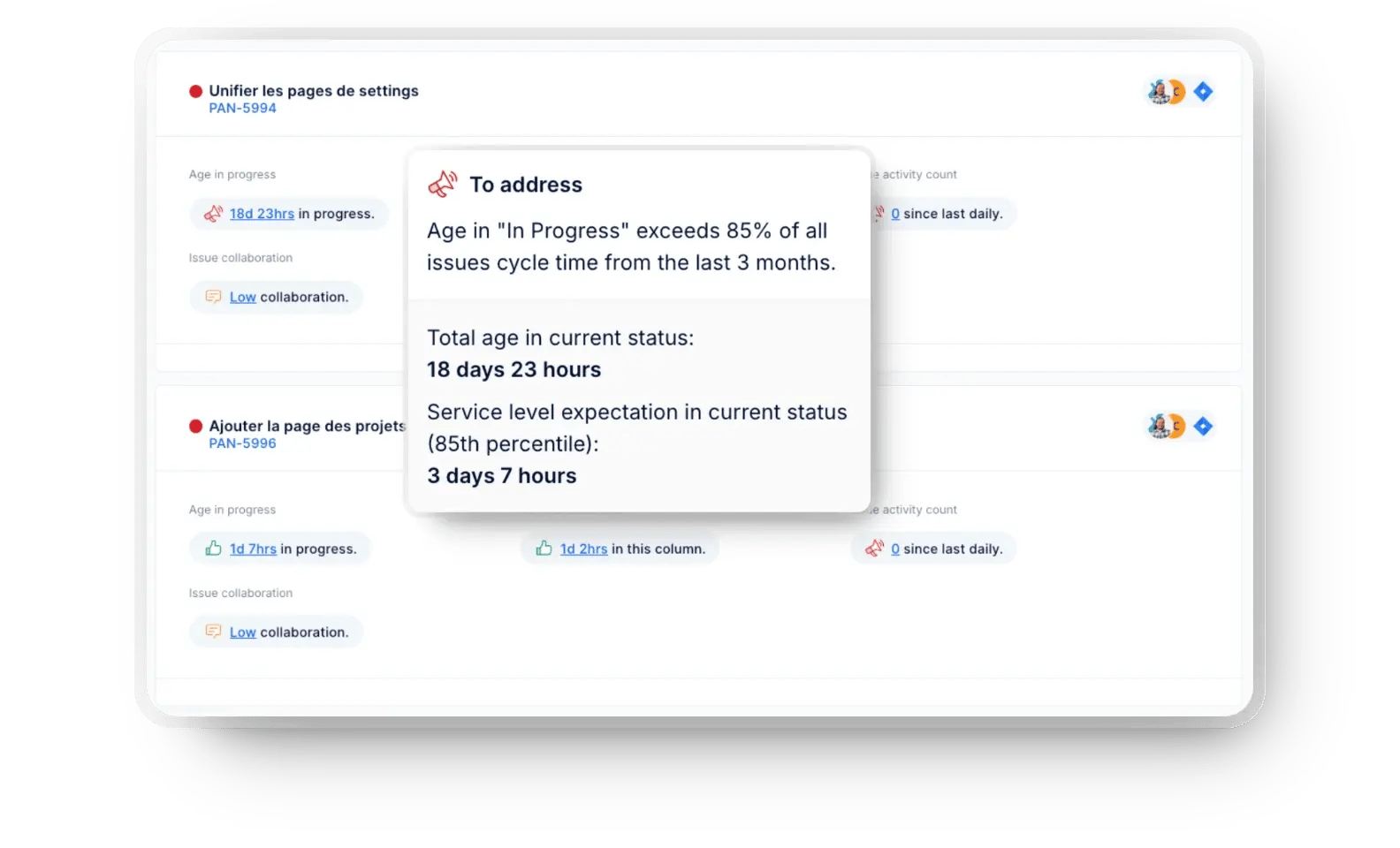
Members of the Steering Committee
Your steering committee needs the right mix of expertise and perspectives to guide your projects effectively. Here are the key members who should be part of your committee:
- Project sponsor: This person ensures the project stays on track with your strategic goals. They provide high-level support and make critical decisions when needed.
- Executives (CIO, CTO, etc.): They bring organizational insights and allocate the resources needed to keep the project moving forward.
- Project managers: These people represent the operational side. They provide progress updates, share challenges, and ensure the project stays on track. This kind of input connects your strategic decisions with day-to-day execution.
- Key stakeholders: These members bring specialized expertise and advocate for specific project requirements. They ensure the project addresses the needs of the departments or groups they represent.
- External advisors or consultants: These experts offer an unbiased perspective and provide valuable recommendations. They can be invaluable in identifying potential risks or improving strategies.
Steering Committee Challenges
Steering committees are essential, as you can see. However, they face plenty of obstacles that can limit their effectiveness. Identifying these challenges helps you address them proactively and keep your projects on track. Here are some of the most common hurdles you may encounter:
- Lack of visibility: Without clear insights into project performance and bottlenecks, you’re left guessing. This can lead to misaligned priorities and delayed outcomes.
- Ineffective communication: Priorities might clash when stakeholders don’t share a unified understanding. Misaligned goals can derail progress and waste valuable time.
- Data overload: Too much data can be just as problematic as too little. Filtering through irrelevant information makes decision-making slower and less precise.
- Delays in identifying risks: If risks are spotted too late, your team reacts instead of planning. This reactive approach typically leads to unnecessary disruptions.
- Resource misallocation: Without visibility into team workloads and capacity, resources are distributed unevenly. This impacts efficiency and delays delivery.
Axify Features to Streamline Your Steering Committee
Having the right tools can make a significant difference when managing a steering committee. Axify offers features that provide real-time insights and actionable data to help you focus on what matters most.
From high-level overviews to in-depth metrics, Axify simplifies decision-making and improves your ability to keep projects on track. Let’s see how our tools and features can transform your steering committee’s effectiveness.
CIO Dashboard
The CIO Dashboard combines critical engineering metrics into a single, easy-to-access view. You get a clear snapshot of your team’s productivity, including bottlenecks, completed tasks, and deployment frequency.
This feature allows your steering committee to have insights at a glance. Plus, it makes it easier to address challenges and improve overall performance.
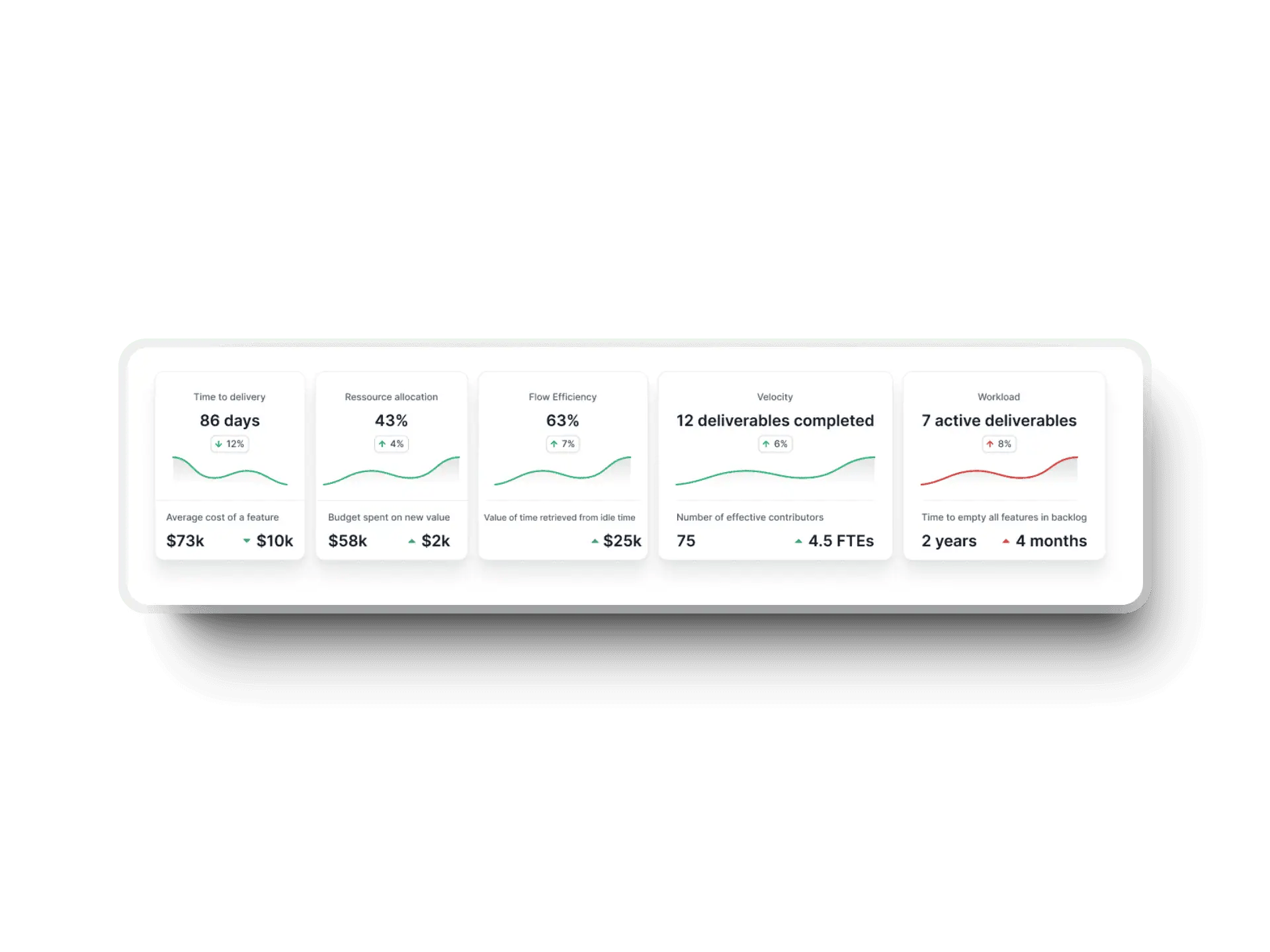
Imagine having real-time updates on progress without digging through reports. With the CIO Dashboard, you can quickly identify areas that need attention and ensure that every discussion in your committee meeting is focused and data-driven.
Whether tackling resource allocation or setting strategic goals, this dashboard keeps you informed and confident in your decisions. Axify puts clarity and control at your fingertips so that you can make smarter choices without the guesswork.
Process Optimization Metrics
You need clear visibility into key indicators such as code quality, operational efficiency, deployment frequency, and bug resolution times to make decisions that drive meaningful improvements. And following engineering metrics is how you can understand how your projects perform at every SDLC level.
These metrics allow your steering committee to stay proactive and focused on impactful changes. Leveraging these insights helps your steering committee to:
- Pinpoint inefficiencies across workflows, identifying coding issues, delayed deliverables, or bottlenecks in your processes.
- Detect delays early to reduce risks and adjust plans before minor setbacks become significant problems.
- Ensure project goals stay on track by continuously monitoring progress and implementing process improvements as needed.
When you have real-time access to actionable data, you shift from managing issues reactively to improving processes proactively. Axify helps your steering committee create a foundation for smoother execution, improved outcomes, and long-term project success.
Value Stream Management (VSM)
Axify's Value Stream Mapping (VSM) feature gives you a clear view of your workflows, from initial concepts to final delivery. It identifies real-time bottlenecks, inefficiencies, and delays so your steering committee can address issues before they escalate. Visualizing the entire value stream lets you easily see where processes slow down and prioritize resources to improve flow.
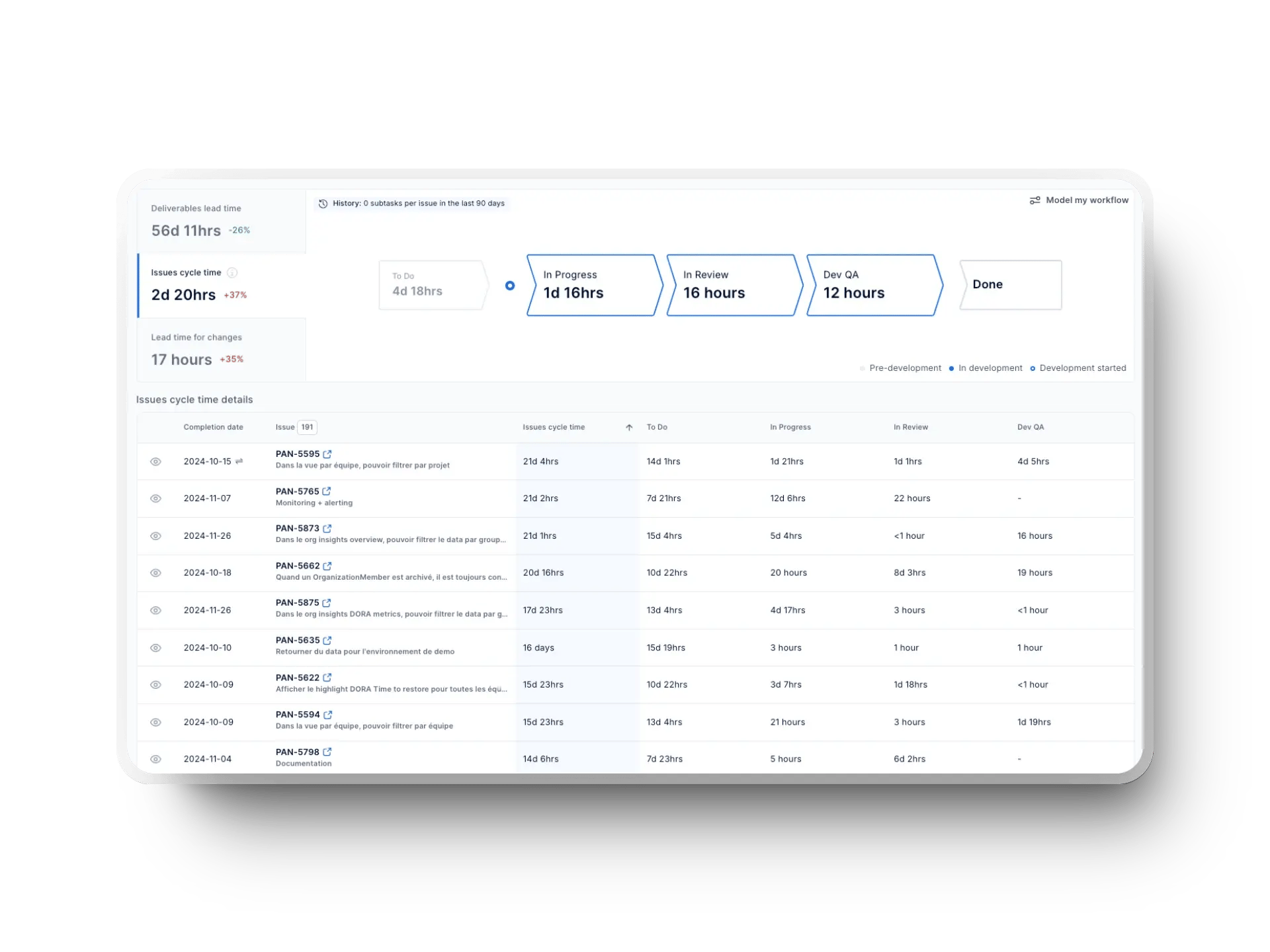
This tool is especially valuable when managing large projects or coordinating multiple teams. You can ensure that every step aligns with your strategic goals while improving delivery speed and quality.
You get clarity to focus your efforts where they’ll make the most impact. Instead of guessing what’s holding up progress, you have insights to streamline operations and keep everything moving efficiently. This empowers your steering committee to make informed decisions that lead to better outcomes.
Software Forecast Delivery
Axify’s Software Forecast Delivery tool helps you accurately predict delivery timelines using historical data. Understanding how long tasks have taken in the past allows you to set realistic deadlines that match your team’s capacity.
This feature gives your steering committee the confidence to communicate clear expectations to stakeholders and ensure smooth project execution. With these forecasts, you can allocate resources more effectively, balance workloads, and address potential bottlenecks early.
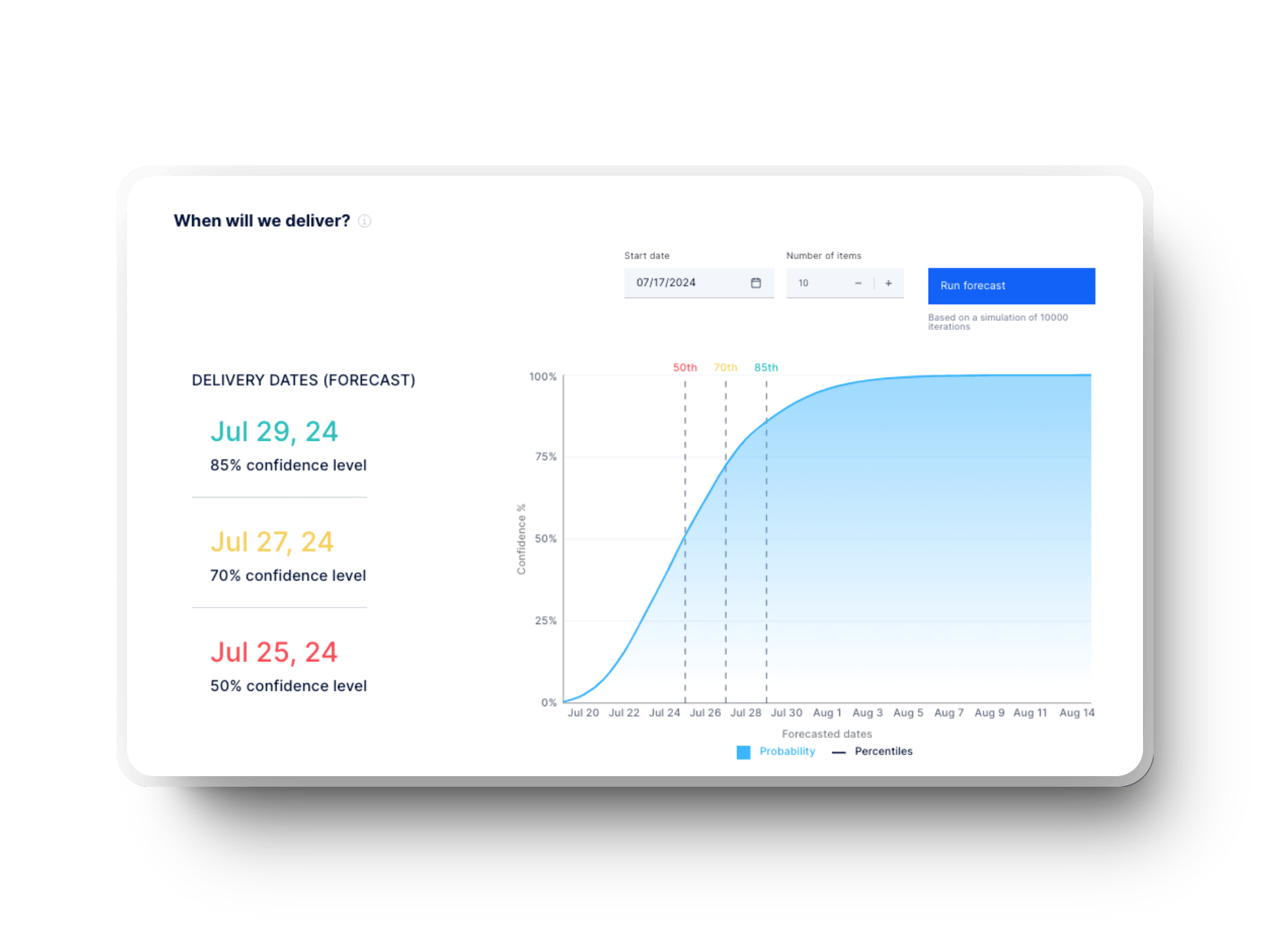
Steering committee meetings become more productive when concrete data supports decisions and plans. This tool also helps you track progress and adapt timelines if unexpected challenges arise. This transparency strengthens trust and keeps everyone aligned. Plus, it enables you to achieve your goals efficiently and with confidence.
Wellbeing Tracker
Axify’s Wellbeing Tracker focuses on the people behind your projects. It monitors critical metrics such as burnout risk and alignment so you can understand how your team is feeling. Your steering committee can use this data to maintain team morale, avoid overwork, and create a supportive environment.
The Wellbeing Tracker also allows you to identify patterns that might lead to reduced productivity or team fatigue. Instead of waiting for problems to surface, you get the insights to act early.
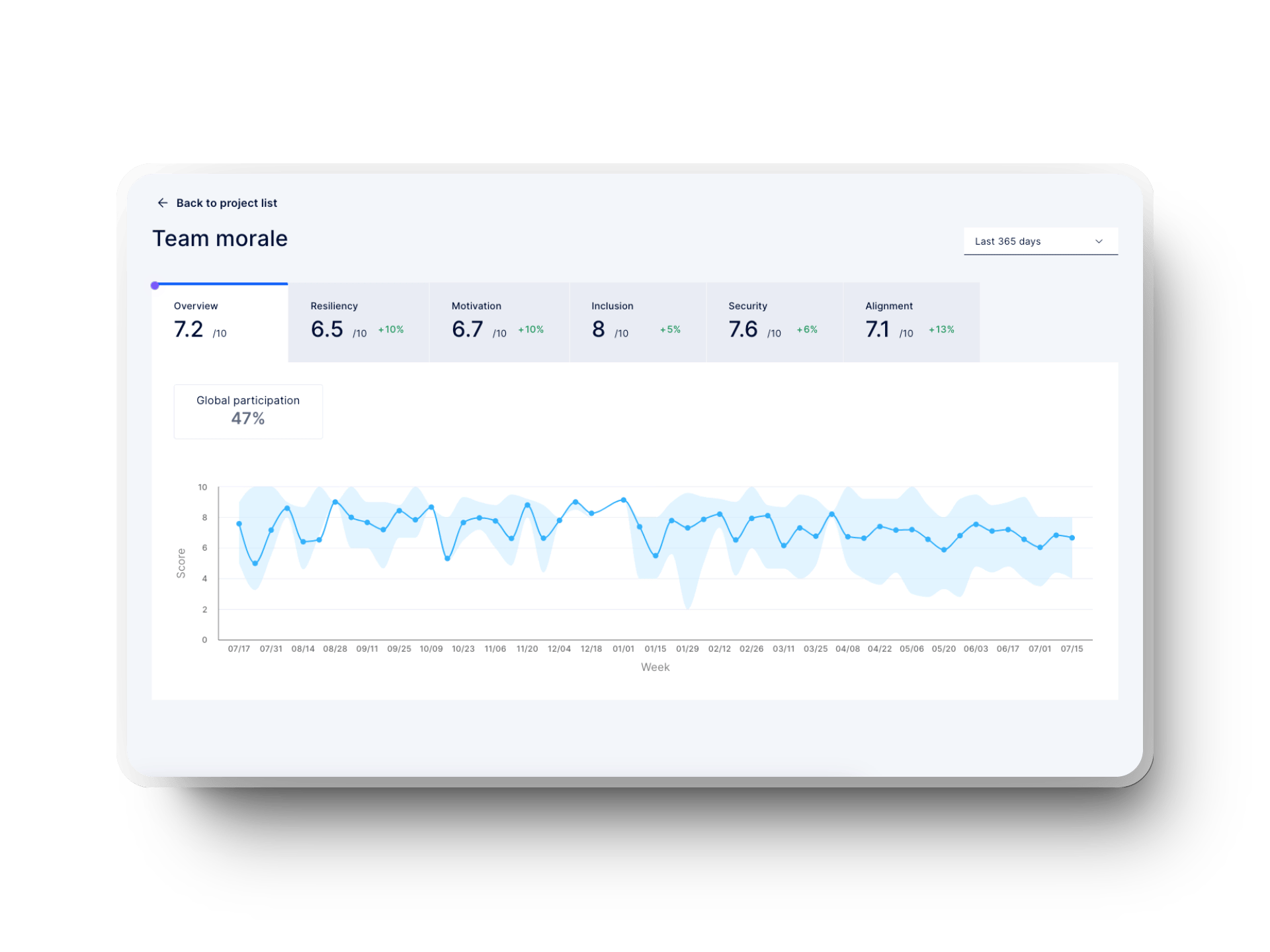
For example, if workload trends show signs of stress, you can redistribute tasks or adjust deadlines. Prioritizing team well-being helps you keep productivity high and ensure sustainable performance.
This tool also helps you build a culture of care and trust. When your team feels supported, they’re more engaged and motivated to deliver their best work. Axify makes it easier for your steering committee to balance your projects' demands with your people's needs.
Ready to transform how your steering committee makes decisions and manages projects? Book a demo with Axify today and see the difference real-time insights can make!






.png?width=60&name=About%20Us%20-%20Axify%20(2).png)


